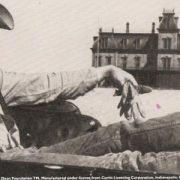In the times of self-submission through casting websites, actors often run out of options in our cities. In the cases like these, or whenever you’re just out of town, submitting for a “long distance” audition isn’t such a bad idea by any stretch of imagination. Another reason for self taping auditions might be when the casting director — not you — doesn’t have time to audition actors in person.
Unfortunately, many actors often feel lost when it comes to filming their own audition and sending it to the casting office. They will always unintentionally find something they can do wrong from the technical standpoint. To prevent any kind of mistakes being made and ensure your self-taped audition is being watched by the casting director how it is supposed to be, try following these 5 simple tips for self taping auditions.
5 Tips for Self Taping Auditions
Perform a filming test with yourself in the shot first and foremost. There are a lot of things to consider when you’re working as an actor, director and a cameraman all at the same time:
- Pick a perfect frame for yourself: slightly above the waist and up
- Make sure that top frame is right above your head without much space in between
- Get the perfect, straight-on angle, without any of your “artistic” filming skills
- Check if you’re not sitting too close to the camera or too far; adjust the focus
- Optional: At the end of self-taped audition, you can give them a full-body shot
Film your audition on a plain background after you’ve done the test; ideally it would be the green screen (or any other color screen), but usually any background, like a plain wall, without distractions will do just fine. Try your best to get rid of shadows (you don’t have to be obsessed about it though, it’s understandable), and anything that might look distracting when watching. Keep in mind not to wear clothes of the same color that your background is.
Use a friend who can read lines with you if your piece is not a monologue. If the friend is an actor, that’s even better. They can also help you with taping, adjusting camera’s focus and making sure the things are running smoothly behind the camera during the self taping auditions. Reading lines yourself for both character, or using a recorder for the same purpose is strongly not recommended.
Do multiple takes of your audition. If you have time, what’s stopping you? Try different characters, different approaches to the role, as well as different tones of voice and movement (limit to a minimum) so that you can later watch it, see how it works for the camera and pick just one that is good. Do not send all clips to the casting director, it only has to be one, and it has to be clearly the best.
Watch and re-watch your self-taped audition many times before sending it. It’s simple, but very important. You have to know what you’re sending to them and you have to be certain that it’s the best you can provide in the current circumstances. Do not stress about the lighting, positioning, picture quality, etc. — you’ve done the best you could with those. Pay attention to your performance and think, was that really all you could do? If yes, then go ahead and send it off!
These days self taping auditions is a very common thing, and busy casting directors are becoming more open to it. While it’s not ideal for both, the actor and the CD, as they can’t see your true personality the way they can when you walk into the room, the positive side is that you can send out more of these self-taped auditions than you can go to in the same amount of time. Check out below how Hugh Laurie does it when self-taping an audition for “House M.D.”
Just remember whenever you’re recording yourself to keep your voice natural and your volume down as if you’re talking to a person in front of you. Here you don’t have anything to be nervous about so calm yourself, and audition. Now go and seek for something happening out of town!





